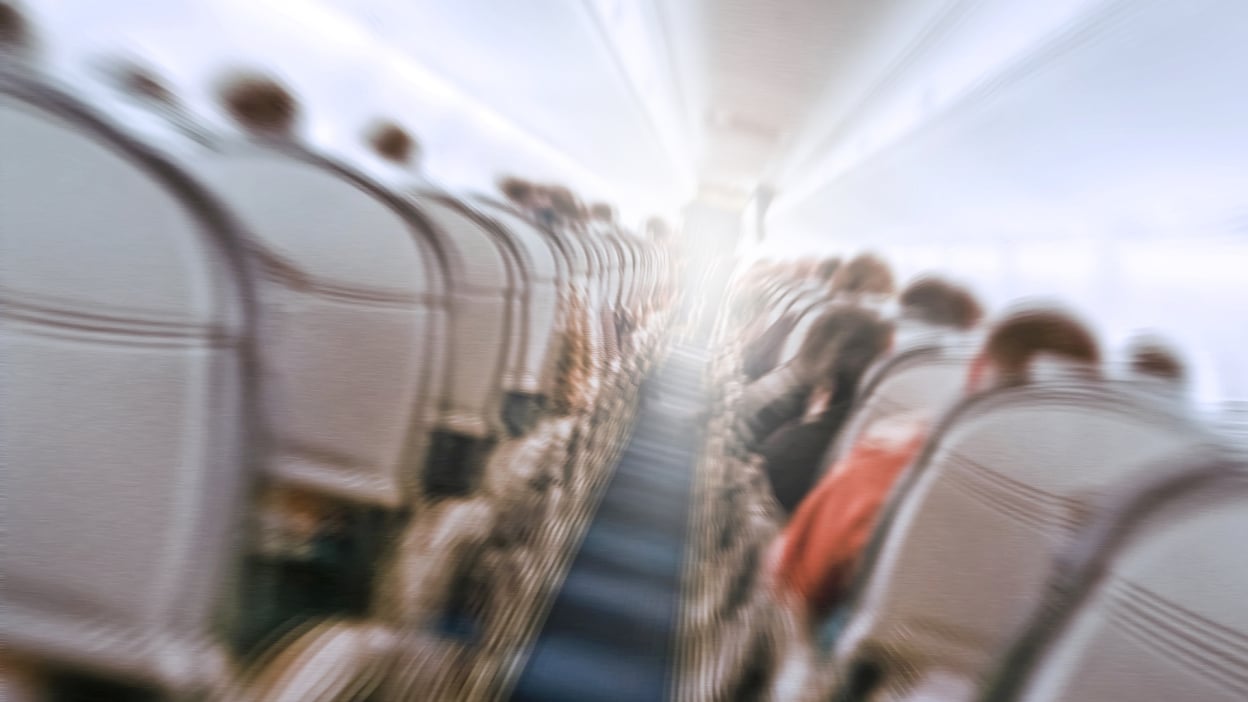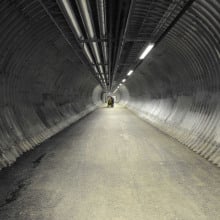The skies can be clear, blue, and tranquil. "And all of a sudden, boom, you hit it," Dan Bubb, a former airline pilot and now an aviation historian at the University of Nevada, Las Vegas, told Mashable.
This boom is "clear-air turbulence," a well-known hazard to aircraft and the passengers aboard. It's created by unstable air that commercial planes sometimes cruise through at higher altitudes. It's not visible from the cockpit. It's doesn't show up on the flight deck's weather radar. "It's almost like hitting a deep pothole with a car going 60 mph," Bubb said. "The turbulence is going to jolt people, and hopefully not injure them."
Yet injuries, or worse, can happen. As a violent mid-air May 2024 event showed, a Singapore Airlines flight from London hit harsh, unexpected turbulence, injuring 83 passengers and resulting in one fatality.
Although this event was particularly severe — and such turbulence fatalities are rare — turbulence overall is happening more. And atmospheric scientists say the culprit is our warming atmosphere.
"We now have strong evidence that turbulence is increasing because of climate change," Paul Williams, a professor of atmospheric science at the University of Reading in the UK, said over email. "We recently discovered that severe clear-air turbulence in the North Atlantic has increased by 55 percent since 1979." (Researchers analyzed four decades of atmospheric data, since modern satellites came online, to determine the upward trend in clear-air turbulence.)
The researchers also noted that "similar increases are also found over the continental USA." Both the North Atlantic and the U.S. see some of the busiest travel routes in the world.
Tweet may have been deleted
And the turbulence will likely grow worse.
"It's almost like hitting a deep pothole with a car going 60 mph."
"Our latest future projections indicate a doubling or trebling of severe turbulence in the jet streams in the coming decades, if the climate continues to change as we expect," Williams added.
Tweet may have been deleted
Why plane turbulence is getting worse
Commercial airliners fly at lofty altitudes, at some 31,000 to 42,000 feet, where the air is thinner and the flight burns less fuel. But the powerful atmospheric jet streams also travel at these heights.
The jet streams are fast-moving wind currents, or streams, of air that travel around Earth. They often meander like a lazy river, but move easterly at speeds reaching 275 mph. On our planet, there are four primary jet streams, two in the polar regions and two at lower latitudes, such as one that often passes across the U.S. and North Atlantic Ocean (as shown in the graphic below). They regularly impact flight in all sorts of ways: The potent jet stream can push flights across the Atlantic, shortening travel times; flying the opposite direction, against the wind, increases flight times.
Yet warmer air is now boosting the amount of wind shear — the difference in wind speeds at different heights — in the jet stream. Crucially, this is "strengthening clear-air turbulence in the North Atlantic and globally," the University of Reading explained.
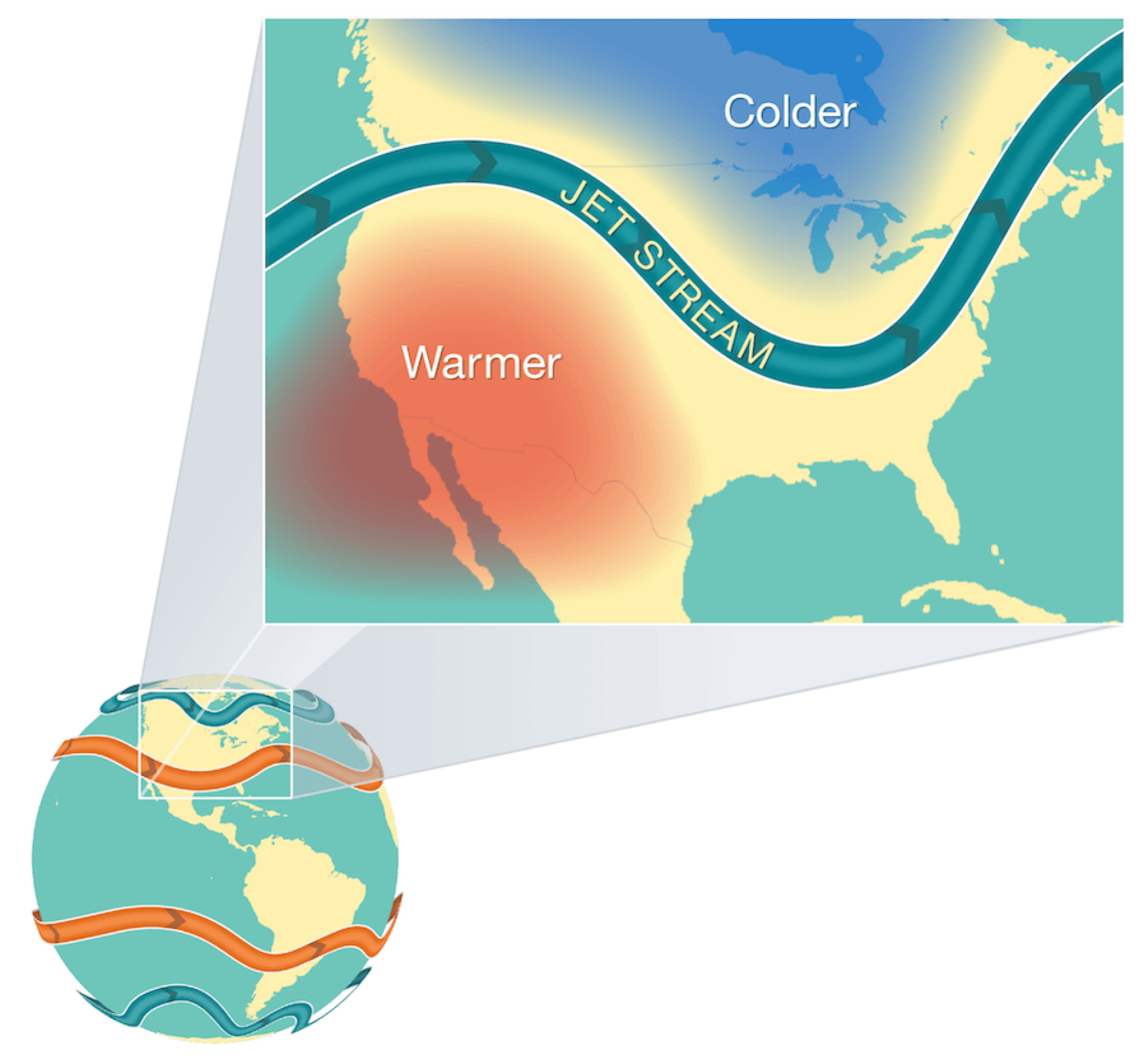
A potent driver of the disrupted jetstream comes from below, explained Michael Pravica, a physics professor at the University of Nevada, Las Vegas. There's increasingly more heat in the climate system, particularly over bodies of water (most of the warming that human activity is trapping on Earth is soaked up the extremely absorbent oceans). Crucially, this added heat rises in a process called convection, similar to how boiling water propels rice around a pot. And this atmospheric convection can disrupt the rapidly flowing jet stream.
"When you have more energy, you have more convection," Pravica explained. "And more convection means more turbulence."
When a plane speeds at some 550 mph through the skies and meets disrupted air, the plane is going to react. "The passengers are going to go every which way if they're not belted," Pravica said. "It's like you're a skater, and then you hit this rough patch of ice that causes friction and change. There are forces on the plane that weren't there before."
"The passengers are going to go every which way if they're not belted."
Scientists expect severe turbulence, and clear-air turbulence, to worsen this century. That's because Earth will continue to heat up, largely fueled by skyrocketing greenhouse gases in the atmosphere. This will continue boosting wind shear in the jet streams, where planes inevitably fly.
"2023 was Earth’s warmest year since modern record-keeping began around 1880, and the past 10 consecutive years have been the warmest 10 on record," NASA explained. Meanwhile, levels of atmospheric CO2 are now the highest they've been in at least 800,000 years, but more likely millions of years.
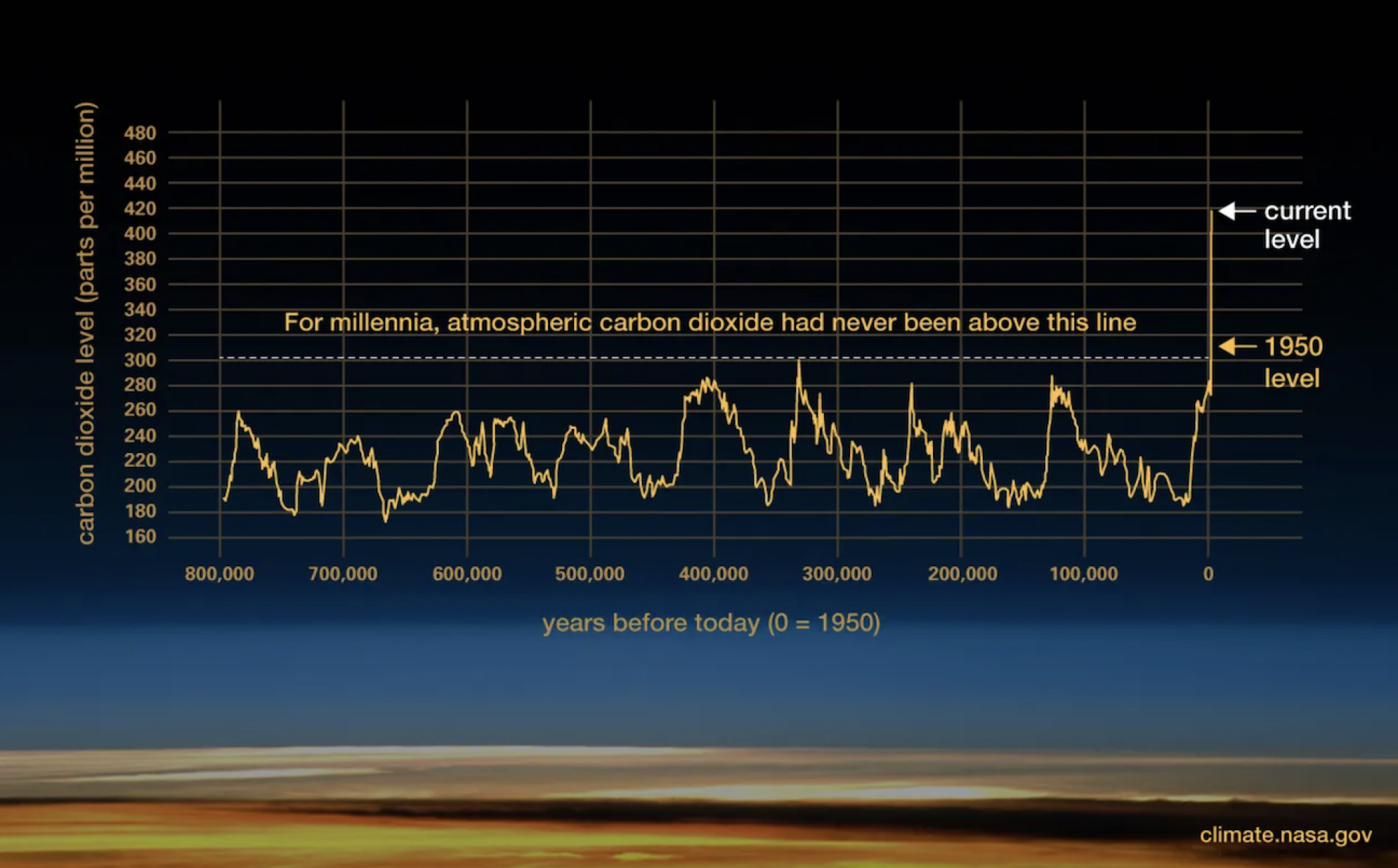
How to prepare for severe turbulence
When aircraft meet clear-air turbulence, they can rapidly, though temporarily, lose altitude. That's because the plane loses some lift in the suddenly unstable air. The Singapore Airlines flight, too, experienced a significant drop.
"You obviously can't see it. But when you hit it, it's an abrupt drop," Bubb, the former airline pilot, said.
With a documented uptick in turbulence, he recommends that passengers take simple measures to ensure their safety. The FAA has documented 163 serious turbulence injuries to passengers and crew between 2009 and 2022.
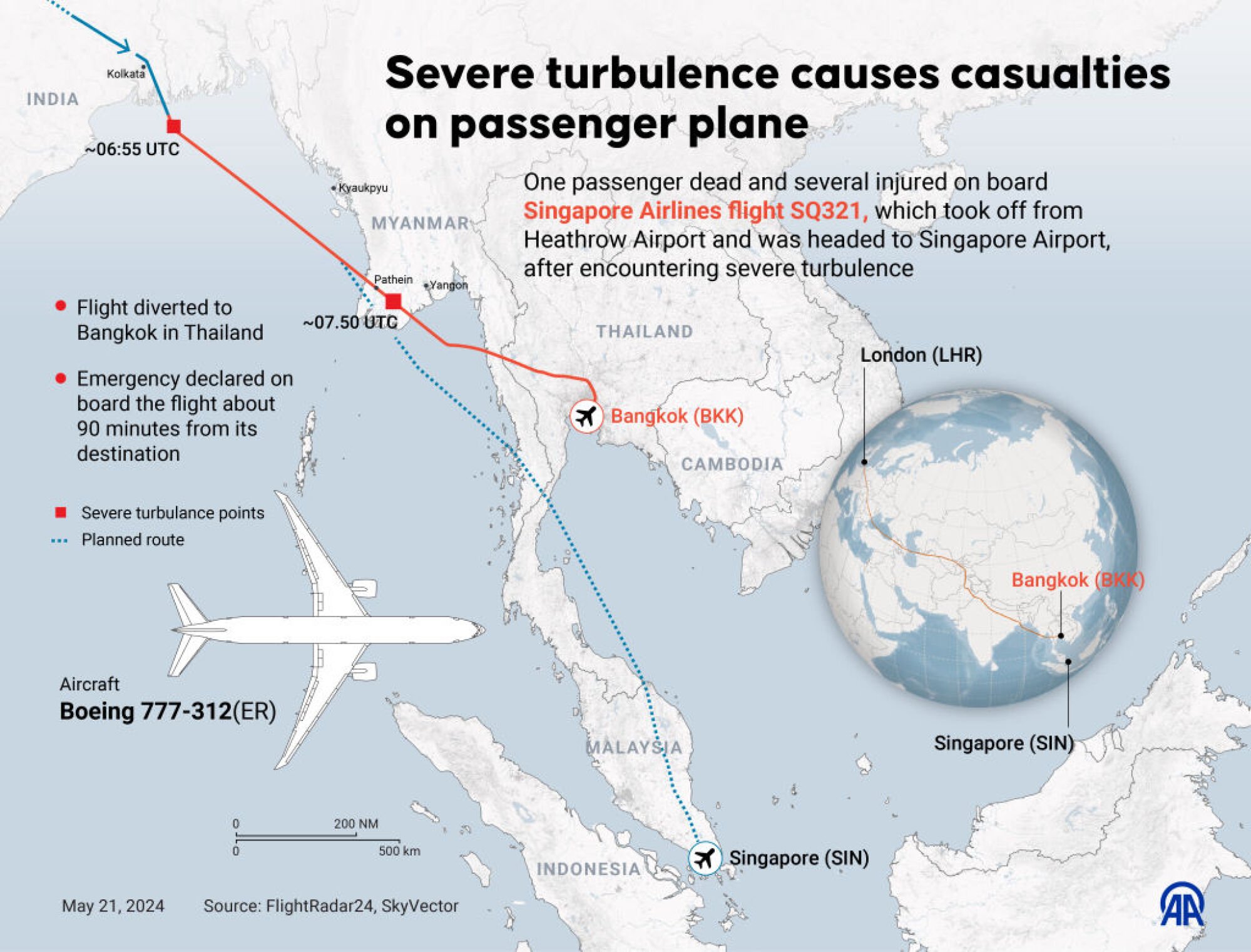
"We're at a time when people can't just be roaming around the cabin. We're at a time when we need to take this more seriously," he emphasized.
Unless you need to use the restroom or stretch for a medical reason, it's best to stay buckled in. The bottom line?
"Even when we turn the 'fasten seat belt' sign off, keep your seatbelt on," Bubb said.
